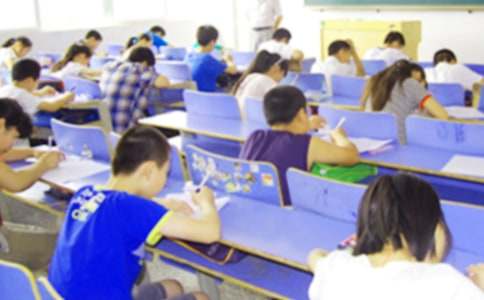2017翻译资格考试中级笔译仿真题及答案
【第一题】

中国是一个发展中国家。多年来,中国在致力于自身发展的同时,始终坚持向经济困难的其他发展中国家提供力所能及的援助,承担相应国际义务。
中国仍量力而行,尽力开展对外援助,帮助受援国增强自主发展能力,丰富和改善人民生活,促进经济发展和社会进步。中国的对外援助,发展巩固了与广大发展中国家的友好关系和经贸合作,推动了南南合作,为人类社会共同发展作出了积极贡献。
中国对外援助坚持平等互利,注重实效,与时俱进,不附带任何政治条件,形成了具有自身特色的模式。
中国的对外援助政策具有鲜明的时代特征,符合自身国情和受援国发展需要。国是世界上最大的发展中国家,人口多、底子薄、经济发展不平衡。发展仍然是中国长期面临的艰巨任务,这决定了中国的对外援助属于南南合作范畴,是发展中国家间的相互帮助。
中国对外援助政策坚持平等互利、共同发展、坚持与时俱进。
当前,全球发展环境依然十分严峻。国际金融危机影响尚未消退,气候变化、粮食危机、能源资源安全、流行性疾病等全球性问题给发展中国家带来新的挑战,新形势下,中国对外援助事业任重道远。中国政府将着力优化对外援助结构,提高对外援助质量,进一步增强受援国自主发展能力,提高援助的针对性和实效性。中国作为国际社会的重要成员,将一如既往地推进南南合作,在经济不断发展的基础上逐步加大对外援助投入,与世界各国一道,推动实现联合国千年发展目标,为建设持久和平、共同繁荣的和谐世界而不懈努力。
参考译文:
China is a developing country. Over the years, while focusing on its own development, China has been providing aid to the best of its ability to other developing countries with economic difficulties, and fulfilling its due international obligations.
China remains a developing country with a low per-capita income and a large poverty-stricken population. In spite of this, China has been doing its best to provide foreign aid, to help recipient countries to strengthen their self-development capacity, enrich and improve their peoples’ livelihood, and promote their economic growth and social progress. Through foreign aid, China has consolidated friendly relations and economic and trade cooperation with other developing countries, promoted South-South cooperation and contributed to the common development of mankind.
Adhering to equality and mutual benefit, stressing substantial results, and keeping pace with the times without imposing any political conditions on recipient countries, China’s foreign aid has emerged as a model with its own characteristics.
China’s foreign aid policy adheres to equality, mutual benefit and common development, and keeps pace with the times.
China’s foreign aid policy has distinct characteristics of the times. It is suited both to China’s actual conditions and the needs of the recipient countries. China has been constantly enriching, improving and developing the Eight Principles for Economic Aid and Technical Assistance to Other Countries — the guiding principles of China’s foreign aid put forward in the 1960s. China is the world’s largest developing country, with a large population, a poor foundation and uneven economic development. As development remains an arduous and long-standing task, China’s foreign aid falls into the category of South-South cooperation and is mutual help between developing countries.
Currently, the environment for global development is not favor-able. With the repercussions of the international financial crisis continuing to linger, global concerns such as climate change, food crisis, energy and resource security, and epidemic of diseases have brought new challenges to developing countries
Against this background, China has a long way to go in providing foreign aid. The Chinese government will make efforts to optimize the country’s foreign aid structure, improve the quality of foreign aid, further increase recipient countries’ capacity in independent development, and improve the pertinence and effectiveness of foreign aid. As an important member of the international community, China will continue to promote South-South cooperation, as it always has done, gradually increase its foreign aid input on the basis of the continuous development of its economy, promote the realization of the UN Millennium Development Goals, and make unremitting efforts to build, together with other countries, a prosperous and harmonious world with lasting peace.
【第二题】
In-state tuition. For decades, it was the one advantage big state schools had that even the Ivy League couldn't match, in terms of recruiting the best and the brightest to their campuses. But these days, that's no longer necessarily the case. Starting this September, some students will find a Harvard degree cheaper than one from many public universities. Harvard officials sent shock waves through academia last December by detailing a new financial-aid policy that will charge families making up to $180,000 just 10% of their household income per year, substantially subsidizing the annual cost of more than $45,600 for all but its wealthiest students. The move was just the latest in what has amounted to a financial-aid bidding war in recent years among the U.S.'s élite universities.
Though Harvard's is the most generous to date, Princeton, Yale and Stanford have all launched similar plans to cap tuition contributions for students from low- and middle-income families. Indeed, students on financial aid at nearly every Ivy stand a good chance of graduating debt-free, thanks to loan-elimination programs introduced over the past five years. And other exclusive schools have followed their lead by replacing loans with grants and work-study aid. And several more schools are joining the no-loan club this fall. Even more schools have taken steps to reduce debt among their neediest students.
【参考译文】
数十年来,州内学费是大型州立学校得天独厚的优势,连常春藤联盟都无法匹敌,因为这能为学校招来最优秀、最聪明的学生。但是如今,情况却未必如此。从今年九月起,一些学生会发现读一个哈佛大学的学位比许多公立大学的还要便宜。去年十二月,哈佛官员详细阐述了一项新的.财政资助政策,对于年收入不高于180000美元的家庭,只收取其中的10%作为学费。绝大多数学生的家庭经济条件一般,本来每年要缴纳45600多美元的学费,对他们而言,这可谓一份厚礼,整个学术界为之震动。近年来,美国的精英大学纷纷出台财政资助政策,相互之间打得不可开交,哈佛大学的这一举措只是其中最新的一项。
尽管哈佛开出的条件是迄今最优厚的,普林斯顿、耶鲁和斯坦福都出台了类似的计划,来降低中低收入家庭的学生所需支付的学费。而且,由于过去五年里采用的免贷款计划,如今几乎每一所常春藤盟校里接受资助的学生都很可能无债一身轻地毕业。其它收费昂贵的学校纷纷效仿,取消了贷款,发放助学金和勤工俭学补助。今年秋天,还有几所学校会加入这个“无贷款俱乐部”。更多的学校都已采取措施,为最需要资助的学生减少债务。
【2017翻译资格考试中级笔译仿真题及答案】相关文章: